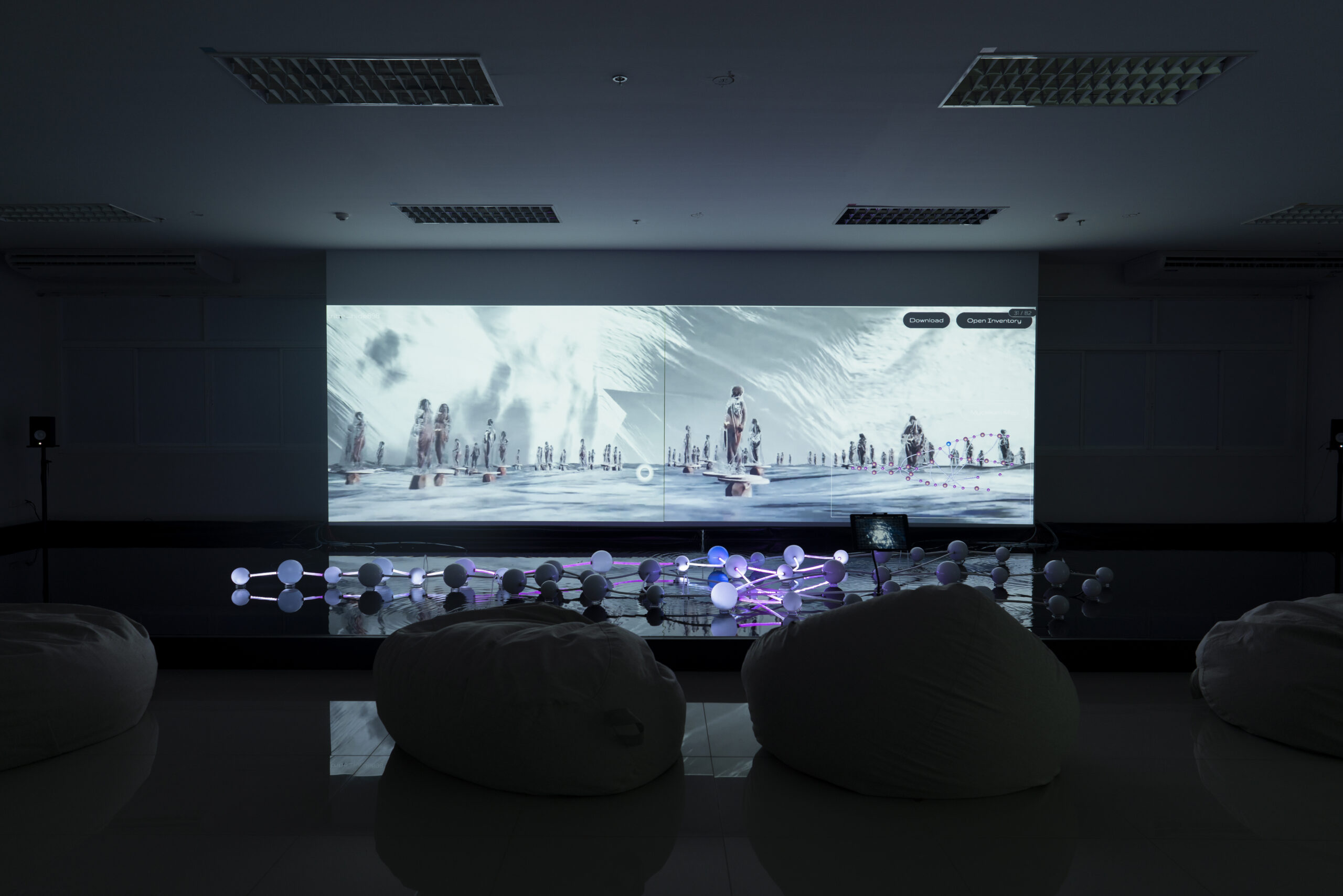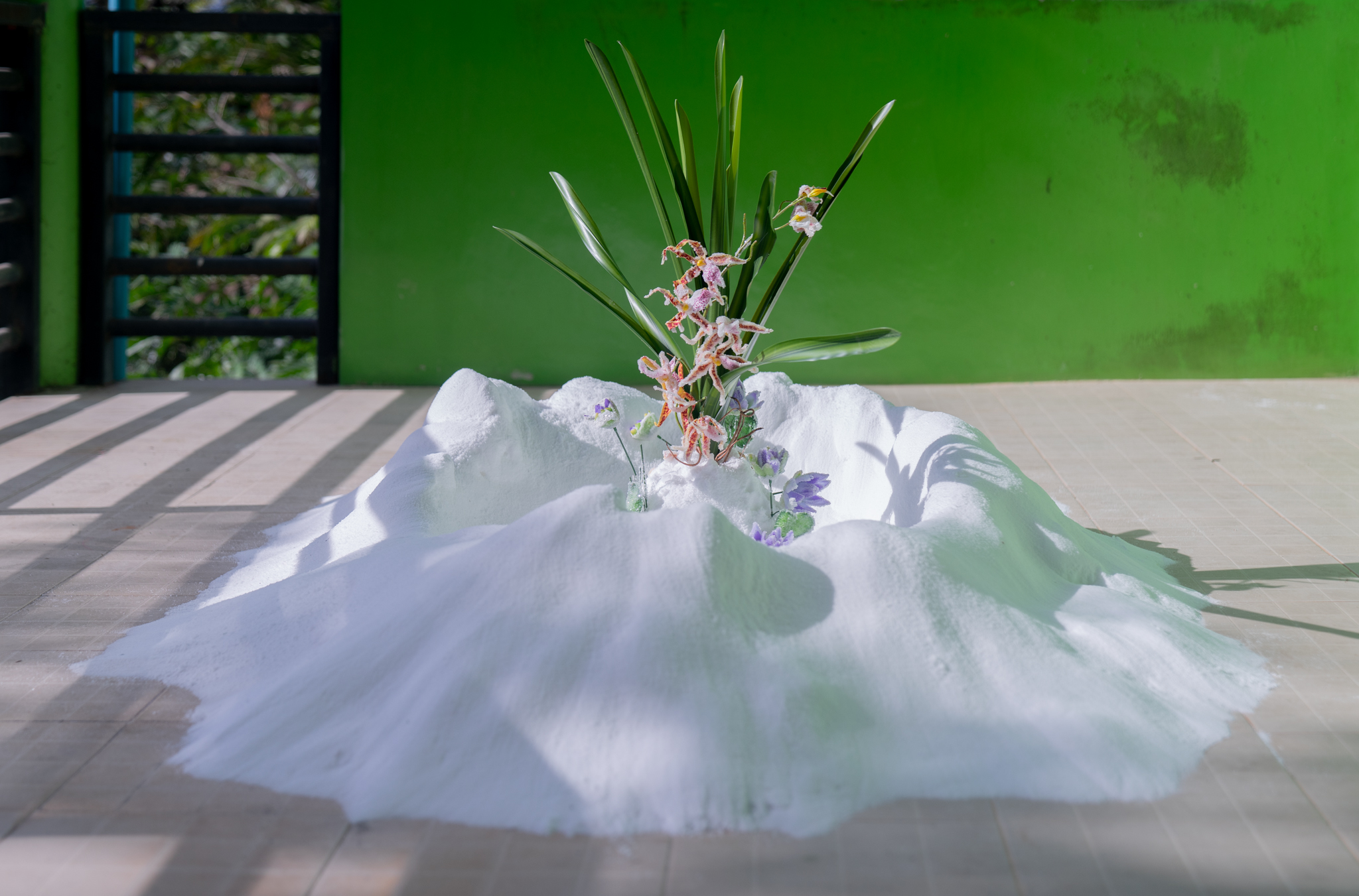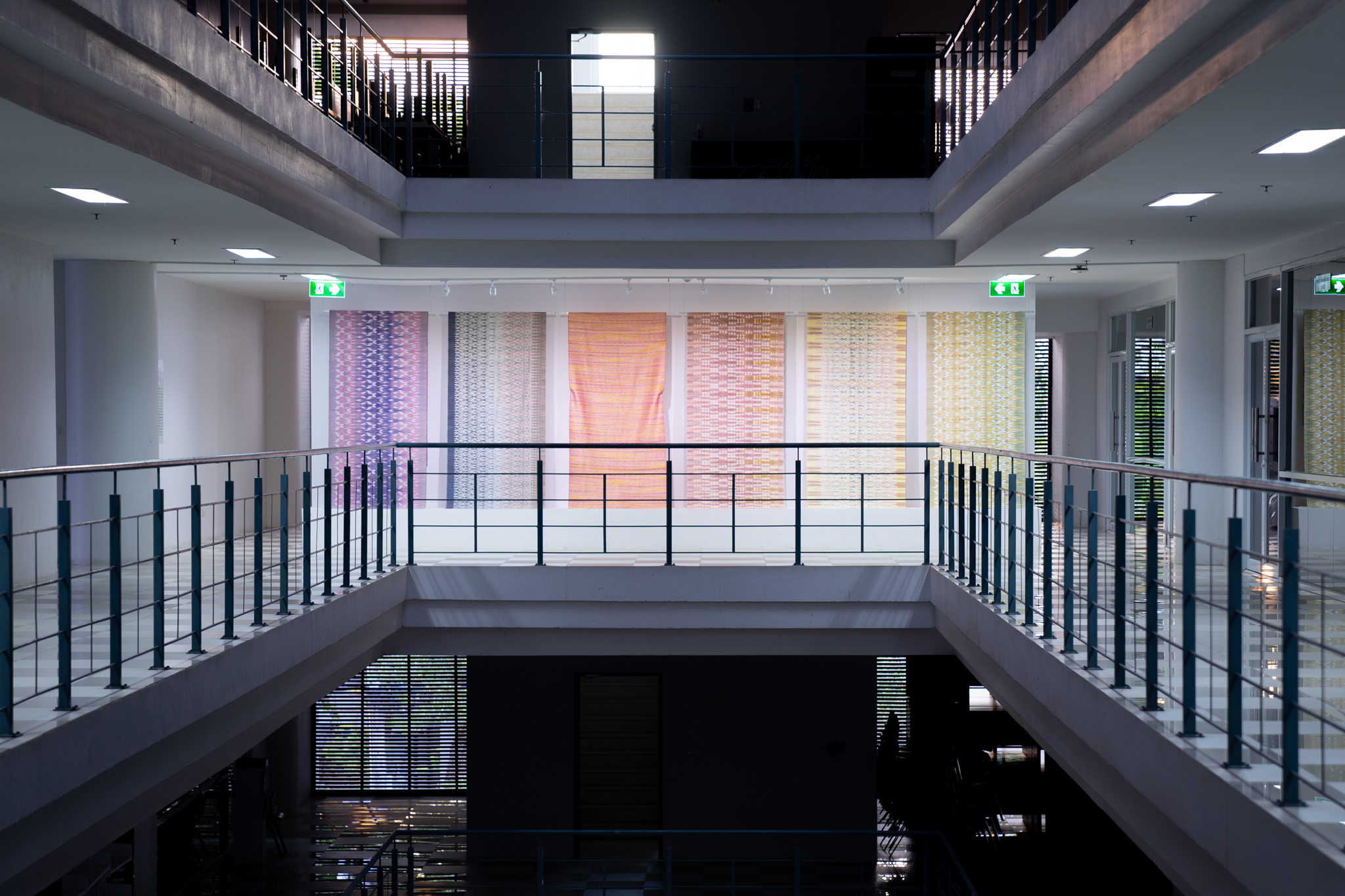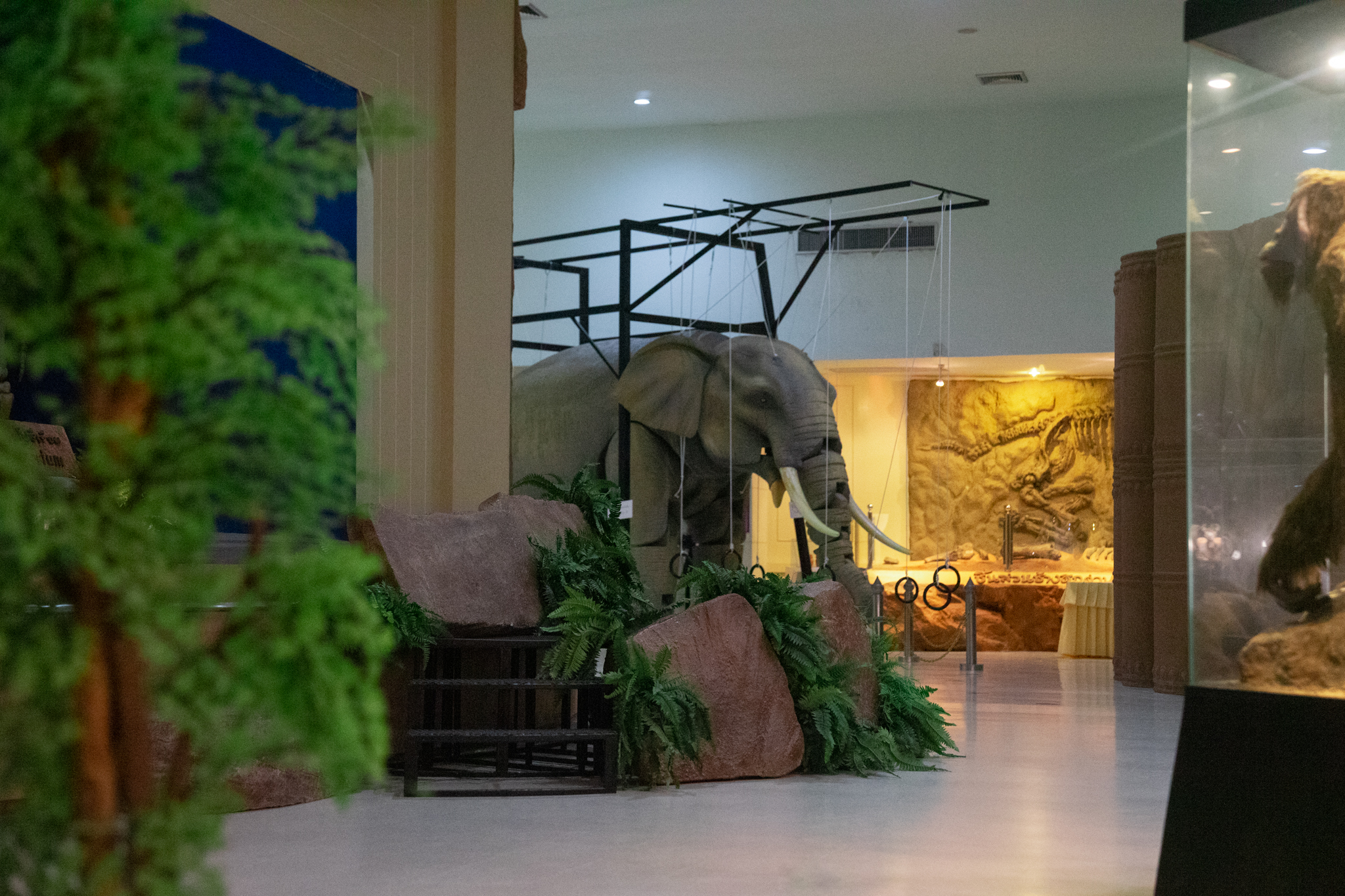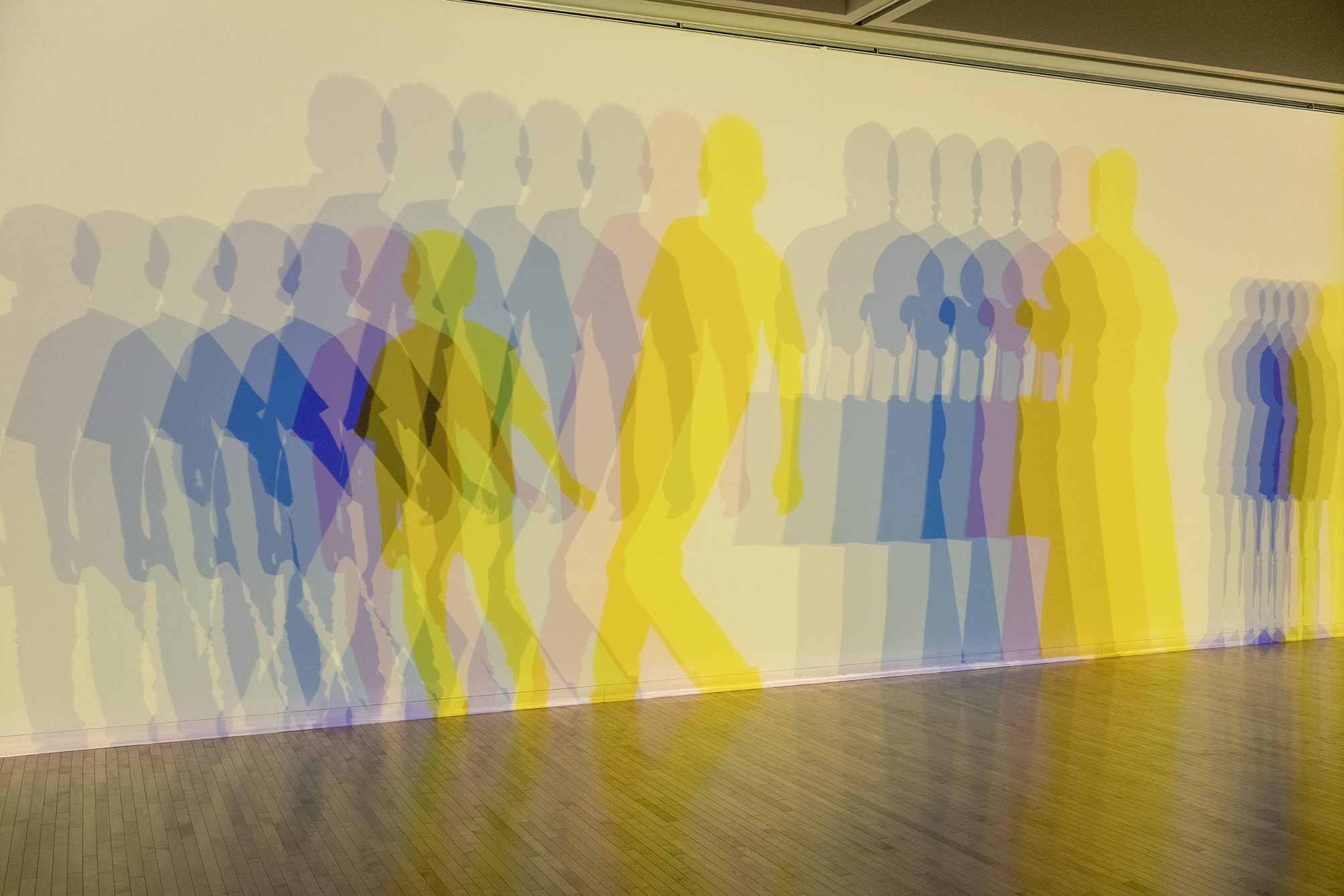Exhibition
Thailand Biennale, Korat 2021
"Butterflies Frolicking on the Mud: Engendering Sensible Capital"
Venue : Thailand Biennale, Korat 2021
Thailand(Khorat)
2021-2022
Organization : Contemporary Art and Culture (OCAC)
Co-curator : Seiha Kurosawa, Vipash Purichanont, Tawatchai Somkong
Artists :
Atacama Desert Foundation, Maxwell Alexandre,Hicham Berrada, Bianca Bondi,Montien Boonma, Mathieu Merlet-Briand, Yanyun Chen, Liu Chuang, Sandra Cinto, Gohar Dashti, Charlotte Dumas, Olafur Eliasson, Jan Fabre, Yang Fudong, John Gerrard, Shilpa Gupta, David Hammons, Federico Herrero, Chris Huen Sin-kan, Junya Ishigami, Rinko Kawauchi, Keiken, Nile Koetting, Koichi Sato and Hideki Umezawa, Alongkorn Lauwatthana and Homesawan Umansap, Kwanchai Lichaikul, Make or Break, Haroon Mirza, Yllang Montenegro Ngoc Nau, Krit Ngamsom, David O’Reilly, Uriel Orlow, PHKA Studio, PNAT, Pomme Chan, Akras Pornkajornkijkul, Boonserm Premthada, Herwig Scherabon, Sema Thai, Slowstitch Studio, Sim Chi Yin, Elias Sime, Eli Sudbrack, Som Supaparinya, SUPERFLEX, Mio Suzuki, Min Tanaka, Rudee Tancharoen, Tsuyoshi Tane, Zai Tang, Prasit Wichaya, YANTOR, Giacomo Zaganelli
The Thailand Biennale Korat (TBK) is being held in Nakhon Ratchasima Province (Korat), the gateway to the Isan region in northeastern Thailand. As the second most populous province in Thailand, it stands at the intersection of two cultural regions, Central Thailand and Laos. While Korat’s social infrastructure is well developed, its cultural and tourism related resources are not as well known as those of Ayutthaya or Chiang Mai.
When I first visited this place, I was impressed by the natural environment and institutional capital necessary for a cultural and human life, in place of the tourist icons that were absent. There are enough lush natural parks and varied geological formations, including cave murals, to make it a summer resort, a well appointed fossil museum that would warrant a UNESCO nomination, a zoo, a temple in Phimai that served as the prototype for Angkor Wat, silk and pottery villages, and a rich variety of schools, universities, libraries, hospitals, temples, and more to match Korat’s population. I sensed the potential for new cultural capital to be created by revitalizing each of these facilities and communities.
The theme of TBK, “Butterflies Frolicking on the Mud: Engendering Sensible Capital,” is not a logical deduction, but an inductive one conceived from this place. It is a proposal and practice aimed at the formation of an autonomous micro-ecology, focusing mainly on the multiple ecologies specific to the Korat region.
Here, the term “ecology” encompasses not only the natural environment, but also all the elements that surround us, including social, psychological, and information-based factors. What we call the “environment” is created through an interplay of the ethical, social, cultural, and natural conditions of each region. In addition to the crisis surrounding the gap between the rich and poor and the decline of local cultures brought about by neoliberalism and the global economy, the current human and environmental changes known as the Anthropocene are creating disturbances and uncertainty around the future of the “affluent society” that we have enjoyed, in one sense. The Anthropocene and the Capitalocene are now two default settings all over the world, and not only humans but all living things find themselves on the verge of a crisis of sustainability.
What might offer us support in terms of being able to live abundantly in this situation? Art is a “skillful craft” that interprets, translates, and gives form to the world. Since the 20th century, it has also constantly offered critique and proposed new visions. The discourse of socio-political critical art as an extension of the liberalism found in the artistic movements of the 1960s, which had formed the basis of the avant-garde, is no longer functional. Art as object in a broad sense continues to be incorporated into capitalism through the market, while information-based art media such as video, text, and documents tend to be isolated because they have become “high,” meta-content in the context of informational capitalism.
As a methodological model, TBK is anti-capitalist. The “project” approach of setting specific objectives as goals and speculating toward their realization is a capitalist methodology. Many art festivals, biennials, and triennials held around the world today are competing to produce “festivity” by attracting as many nationalities and artists as possible in order to achieve goals related to “cultural tourism,” the “revitalization of local art markets,” and “education.” The appearance of these events is becoming monotypic and patterned, as works are either brought to local venues and installed there, or similar works are developed as “site-specific” variations at different sites (different biennales), for instance.
In the case of biennials held in emerging non-Western countries, the “discovery and new interpretation of local artists and cultures by foreign guest curators, as well as the showcasing of an international diversity of artistic expression” may in some cases lead to a certain “colonization” of the locality by existing Western discourses and values. Of course, many biennials in Asia, the Middle East, and South America are based on careful and time-consuming research, as well as the involvement of local curators and critics. However, it is undeniable that the work of situating local cultural identities within a global context has been influenced by the “discursive and polytheistic” nature of contemporary art. It is for this reason that there is often a disconnect with the people of the host city and potential audiences.
In a certain sense, TBK has been a challenge to execute, based on my own experience of curating biennials in various parts of the world and a process of self-criticism. This is because it is an attempt to redefine the action of the biennial itself within the framework of capitalism, to transform the shape of that framework: an experiment in “transforming” it, instead of making it conspicuously different. The intent was to formulate the biennial in an ad-hoc, trial-and-error manner — much as an organism behaves when it enters a new ecosystem without having a specific goal or objective in mind — through negotiations, surveys, and discoveries made in the field. The key elements that needed to be considered in executing TBKwere the themes of local production for local consumption, and the inclusion of creators from as wide a variety of fields as possible.
As such, TBK was not a “project” in the aforementioned sense of setting goals and objectives and working towards their realization, but rather the result of a series of negotiations and practices.
Art inherently occupies a position of freedom from everything else, and has served as a catalyst for exchanges across many fields, including science, sociology, design, architecture, and film. What we should be practicing through art in 2021 is not an antagonistic critique of capitalism, but rather the adoption of a kind of neo-capitalist stance that seeks to create a new, sensible capital centered on emergent systems, by taking advantage of the openness and transversality of art.
"Butterflies Frolicking on the Mud: Engendering Sensible Capital" Yuko Hasegawa (Exerpts from the catalog text)

